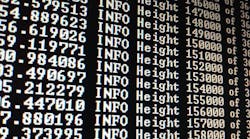Defined as a data structure that makes it possible to create a digital ledger of transactions and share it among a distributed network of computers, blockchain uses cryptography to allow each participant on the network to manipulate the ledger in a secure way without the need for a central authority, according to the Wall Street Journal.
Here’s how it works: Once a block of data is recorded on the blockchain ledger, it’s extremely difficult to change or remove. When someone wants to add to it, participants in the network—all of which have copies of the existing blockchain—run algorithms to evaluate and verify the proposed transaction. If a majority of nodes agree that the transaction looks valid—that is, identifying information matches the blockchain’s history—then the new transaction will be approved and a new block added to the chain.
In Container Shipping, Procurement Go Blockchain, EBN’s B. Cameron Gain highlights how UK-based freight forwarder Marine Transport International is offering shippers the use of blockchain for their digital ledger data. “Among other things,” Gain writes, “the company says blockchain will remove much of the bureaucratic waste and costs associated with the communication of supply chain- and ledger-related information for those doing business with the container shipping industry.”
That could spell good news for electronics buyers who want to streamline the end-to-end supply chain and possibly save both time and money in the process. “Blockchain represents a grassroots transformation of how shippers will collect and store information,” Jody Cleworth, CEO for Marine Transport International, said in the article.
“Those who ship electronics and other components by container ships, which are used to transport over 90% of all trade worldwide, are tasked with communicating and recording notoriously large and cumbersome amounts of detailed bill of lading and other information,” Cleworth continues.
“Besides maintaining archives subject to audits, they frequently must send this information to various parties, ranging from port management companies to customs officials, often around the world,” she adds. “The current bill of ladings system, which many say is antiquated, is often subject to fraud and counterfeiting, while blockchain’s communications are encryption-protected.”
Gain points out that blockchain will likely benefit supply chains outside of the shipping industry. Internet of Things (IoT) devices, he writes, will be connected to blockchain records for instant access. And as this technology progresses in the supply chain arena, a “democratization of assets” could bring a new working dynamic to all actors in the supply chain. The main end result will be the removal of many of the third parties, Gain concludes, “and IT infrastructures that shippers must currently rely on for shipping transactions.









